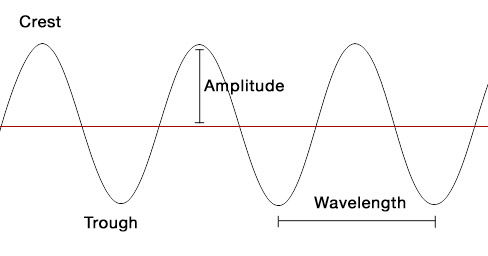 |
| http://thescienceofwaves.weebly.com/uploads/2/5/7/8/25786734/1239513_orig.jpg |
Waves involve the transport of energy without actually transporting matter. In fact, some waves require matter while other waves don't. In addition, there are two different types of waves. This includes Mechanical waves and Electromagnetic waves. A Mechanical wave is a wave that is an oscillation of matter, and therefore transferring energy through a medium. Mechanical waves can travel through matter in the form of a solid, liquid, or gas. An Electromagnetic wave is a wave that can travel through the vacuum of outer space, therefore Electromagnetic waves don't travel through the movement of molecules. Electromagnetic waves work by carrying transverse vibrations in electrical and magnetic fields. The obvious difference between the two types of waves is that Mechanical waves require matter to transfer energy because the wave travels from molecule to molecule, vibrating the matter and causing them to bump into each other. While Electromagnetic waves don't require matter to transfer energy given that the wave travels through vibrations in electrical and magnetic fields.
S&EP - SP1: Asking questions and defining problems
I formulate testable questions when I observed the worksheet that was assigned to the class and read over the questions that I would need to answer. This worksheet contained articles and boxes where I needed to annotate the text. To annotate, I answered questions on the text that I read, wrote down notes that summarized the text, and wrote down connections or questions that I had. I established what is already known about the articles and text that I read by answering the questions that were being asked when I found the answer and wrote down annotations about the text in the boxes provided. I determine what questions have yet to be answered when I looked back over the questions on the worksheet and figured out what questions I hadn't found the answer to yet or the questions I was confused on. In addition, by going through the packet once more, I could see which boxes I didn't fill and add on to previous things I had written.
